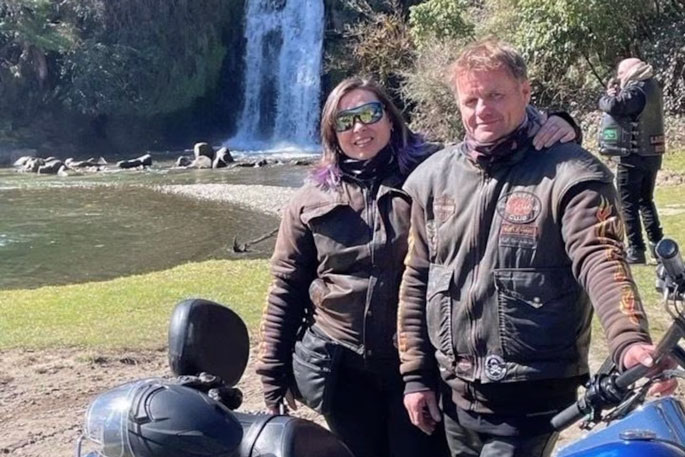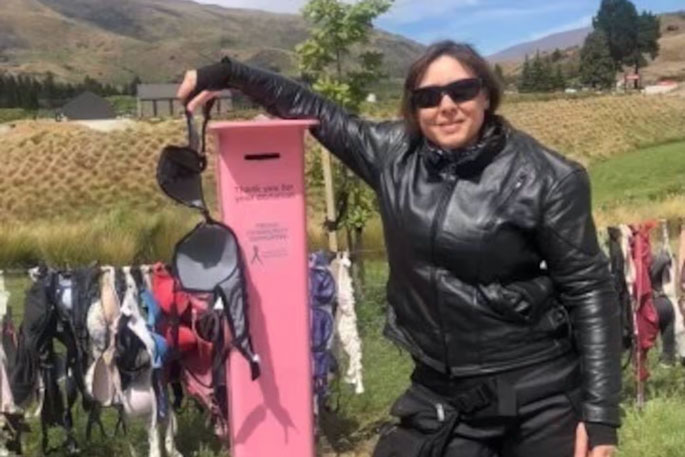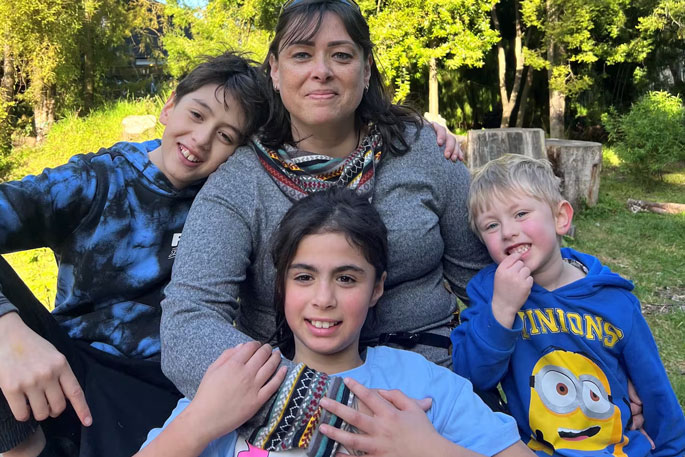She had a growing lump, nipple discharge and pain in her breast, and “deep down” knew these “weren’t good signs”, a Rotorua grandmother says of the worrying changes she noticed before being diagnosed with breast cancer.
But it wasn’t until Deanna Ashby picked up a bookmark on breast cancer symptoms at a Breast Cancer Foundation NZ Pink Ribbon Breakfast taking place at her work that she realised she had to make the hard decision to go to her GP.
The 46-year-old is talking about her diagnosis ahead of the foundation’s annual breast cancer awareness month in October, which this year focuses on self-care and early detection as rates of late-stage diagnosis remain static.
“I had found a lump before the breakfast, but I was busy caring for my grandchildren, who were 1 and 2 at the time, so I didn’t do anything about it”, Ashby said of her symptoms in 2018.
“The only time I ever went to the doctors was for the grandkids.”
By the time she went to the breakfast, the lump had grown, she had nipple discharge and pain, and her skin around the lump felt different.
“I knew deep down these weren’t good signs, but I delayed getting checked because I didn’t want to have to worry about anything other than my grandchildren.”
Her grandchildren were her priority, but reading the bookmark made her realise “if I wasn’t okay then I wasn’t going to be any use to them”.
Ashby, then 40, was sent by her GP for a mammogram.
“I could clearly see the image in a mirror opposite the screen and knew I had cancer.”
Diagnosis followed soon after, its memory “a blur” six years on, as there was “so much information to take in”, she said.
“I do remember being very worried about what it would mean for my kids and grandkids.”
 Breast cancer survivor Deanna Ashby, pictured at the "Bradrona" bra fence in Cardrona, has spoken of the importance of early detection ahead of breast cancer awareness month.
Breast cancer survivor Deanna Ashby, pictured at the "Bradrona" bra fence in Cardrona, has spoken of the importance of early detection ahead of breast cancer awareness month.
After sending her grandchildren to live with her mum, Ashby had a partial mastectomy followed a couple of months later by five weeks of radiation.
Fortunately, she didn’t need chemotherapy for the stage 1, grade 1 cancer.
However, side effects from ongoing hormone treatment were “horrible”, Ashby said.
“It caused joint pain, constant headaches and nausea. My mental health really went downhill. I’d never been depressed before, but hormone treatment got me all the way down so after two years I stopped it.”
 Deanna Ashby, pictured with partner Aaron Dean, found a second lump in her breast in 2022, but - as with in 2018 - early detection helped her avoid chemotherapy.
Deanna Ashby, pictured with partner Aaron Dean, found a second lump in her breast in 2022, but - as with in 2018 - early detection helped her avoid chemotherapy.
Then in March 2022, four days before planned breast reconstruction surgery, Ashby found another lump.
Desperate for her surgery to go ahead so she could “feel normal again” she initially baulked at getting the lump checked.
“But my family talked me into it. It turned out I had a recurrence of the first cancer and luckily it was also caught early so I could avoid chemotherapy.
“I’ve learnt that early detection is why I’m still here to watch my grandkids grow up. If I hadn’t seen the bookmark and learnt about the symptoms, I don’t know how long I would’ve left them. By the time I saw the doctor it could’ve been too late, and things would’ve been so different for me.”
The Ngā Puhi mum-of-three’s message for women was “not to be whakamā [ashamed] going for your mammograms or checking your breasts”.
“And if you spot something, it’s always worth getting checked. Don’t muck around. It’s worth it for your whānau.
“Talk openly and freely with your friends and family, no matter what the age is, about what is going on. It may help one of them open up if they are showing signs, as they really should get checked too.”
 If you spot or feel something unusual with your breasts, "don't muck around" in getting it checked, says breast cancer survivor Deanna Ashby, pictured with her bra donation to Cardrona's "Bradrona" bra fence.
If you spot or feel something unusual with your breasts, "don't muck around" in getting it checked, says breast cancer survivor Deanna Ashby, pictured with her bra donation to Cardrona's "Bradrona" bra fence.
Breast cancer is the most common cancer among New Zealand women, with about 3500 diagnosed each year and 650 dying from it.
However, the 10-year survival rate is 95% if cancer is detected by mammogram and 85% if a lump is the first sign. Stage 1 and 2 breast cancers have a 92% survival rate.
Too many women were getting their diagnosis too late, Breast Cancer Foundation NZ chief executive Ah-Leen Rayner said.
Fifteen per cent of all breast cancer cases - around 525 women each year - were the harder to treat late-stage diagnoses, a number that hadn’t budged for a decade.
An Ipsos market research survey commissioned by the foundation found of 1000 women surveyed 92% knew they should check their breasts, but 57% forget to do it and around 40% hadn’t looked at their breasts in the mirror or felt them to check for changes in the past six months.
“This October, we’re reminding women to get to know the normal look and feel of your breasts, regularly check for changes and see a doctor as soon as possible about any changes.
“Making this part of your routine is the ultimate act of self-care – it’s what could save your life from breast cancer.”
Cherie Howie is an Auckland-based reporter who joined the Herald in 2011. She has been a journalist for more than 20 years and specialises in general news and features.



0 comments
Leave a Comment
You must be logged in to make a comment.